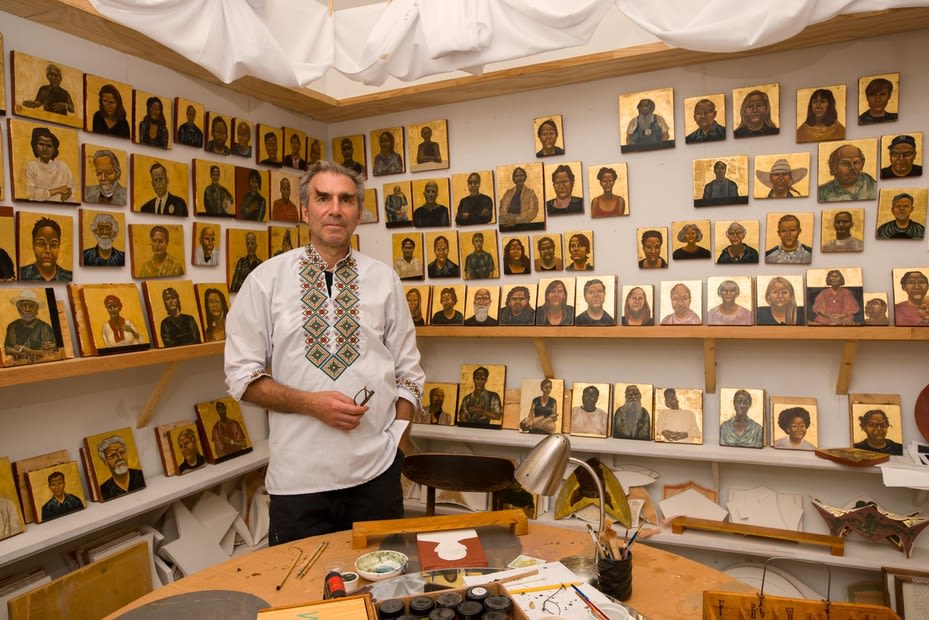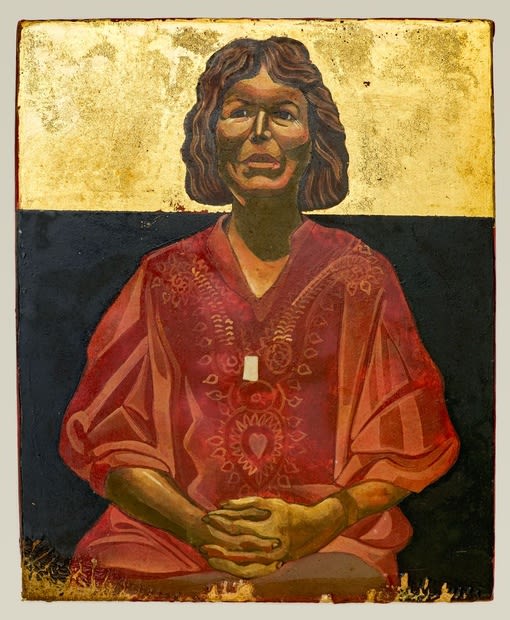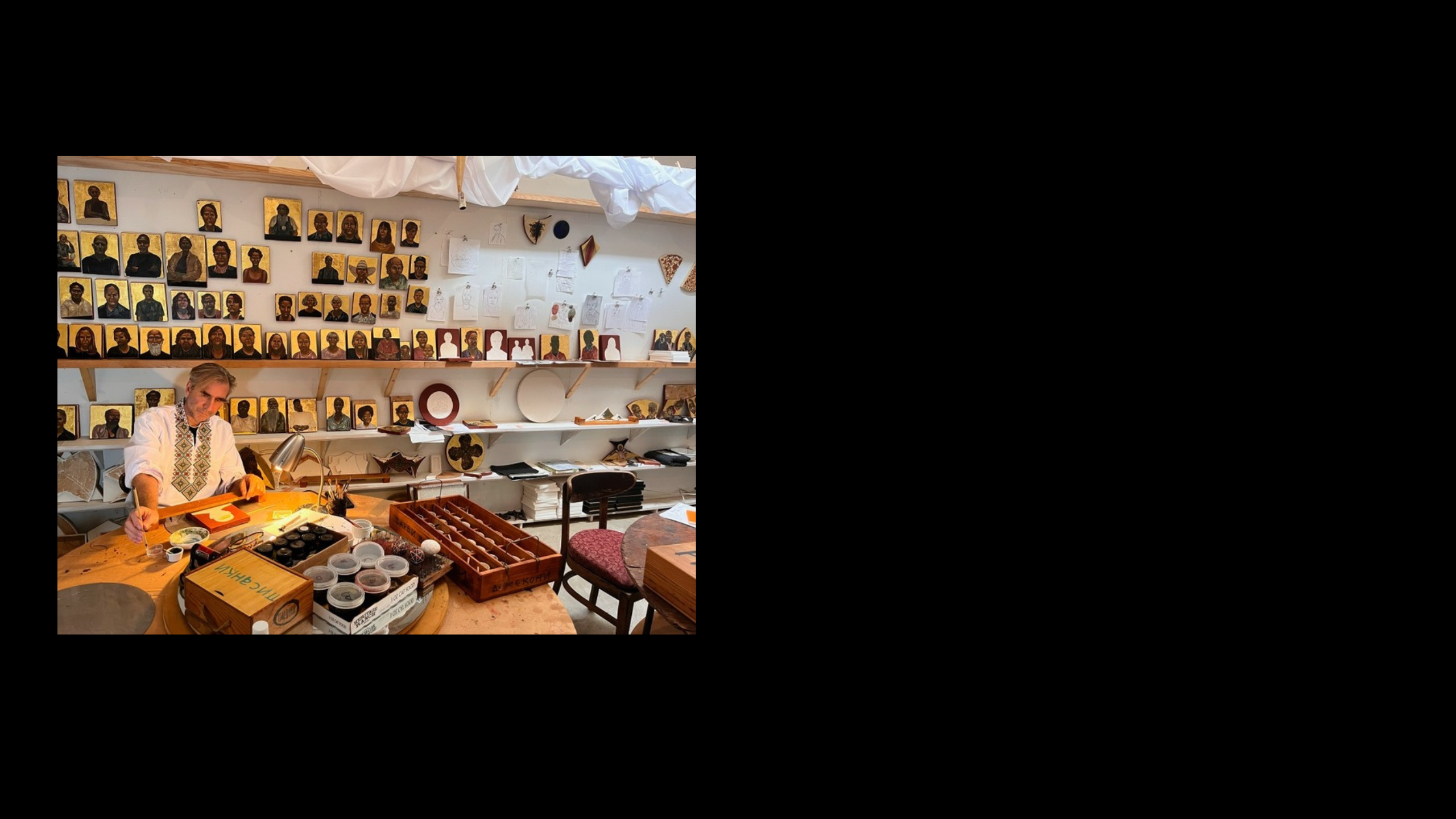Finding the Divinity in Us All
University of Houston alumnus Nestor Topchy exhibits his work at Menil Collection

University of Houston alumnus Nestor Topchy’s (MFA ’87) exhibition, “The Iconic Portrait Strand by Nestor Topchy,” at the Menil Collection is a one-of-a-kind project exploring the inherent dignity and spirituality inside us all. Between now and January, his collection of more than 100 small portraits with gold backgrounds and intricate detail, spanning 20 years of work, will be on display at the museum located in the heart of Montrose.
His work may be unique, but it presents a universal message: Everyone has a spark of the divine inside them. By painting a subject in the style of religious icons, that innate saintliness shines through. Classifying Topchy’s style is difficult to define. It’s a mixture of 800-year-old Byzantine art, Pysanky (Ukrainian Easter egg art), Demekon (painting, sculpture and architecture predicated on geometry and abstraction) and incarnation (portraits based upon iconographic materials and method), with a bit of Topchy’s current-day modern creativity added to the blend. One thing Topchy emphasizes is that his paintings are not icons, they are iconic. They aren’t religious, per se.
“I don’t assign that function to these portraits,” Topchy said.
“My work doesn’t comment on anyone’s faith. Rather, it allows each sitter’s innate dignity, divinity, Buddha nature, potential saintliness, etc., to reflect that as part of the universe, or God, if you like, as being one thing and yet part of a larger whole, having a pronounced spiritual quality.”

Topchy begins by sketching the image of his subject — usually a friend or colleague. He takes traditional materials like red clay, powdered marble and chalk gesso, gold leaf and pure mineral pigments: vodka, fig milk, cloves and linseed oil. He then paints on “demekon” shaped wooden panels. The result can’t help but evoke a feeling of reverence and spirituality.
Such a unique artistic talent was refined here at the University of Houston. Topchy graduated from the Maryland Institute College of Art in Baltimore and traveled to Houston for his master’s degree. Why Texas? “I wanted elbow room, to be in large working spaces, to spread out and get some art work done,” he said. “I hadn’t visited before I showed up, so I was a bit surprised by how open and vast Texas is, but once I got used to the climate and area, I found it ideal for my work. I also discovered the hospitable culture, inexpensive studio space and amazing local cuisine of the Tex-Mex and Vietnamese cultures.”

Enrolling in the UH graduate fine arts program turned out to be influential for Topchy. A generous and much-appreciated scholarship helped pave his way, and he discovered flexibility and freedom in creating a curriculum. “As a grad student, I constructed my own courses with the professors,” Topchy said. “They allowed me to write my own curriculum that puts together two years of 23 graduate course hours into one year to meet my requirements. I have to say, such flexibility in academics is unusual, that the professors and I worked together to pursue a structure that suited my plans.”
Topchy doesn’t think his work will say the same thing to everyone who views it. “I don’t think of it like literature, with a specific message. I mostly think the work speaks to us all differently. If a viewer is open and left in solitude to absorb the artwork, they’ll come to their own impressions.”
Topchy is grateful for the community support and the positive feedback he received on his work.
